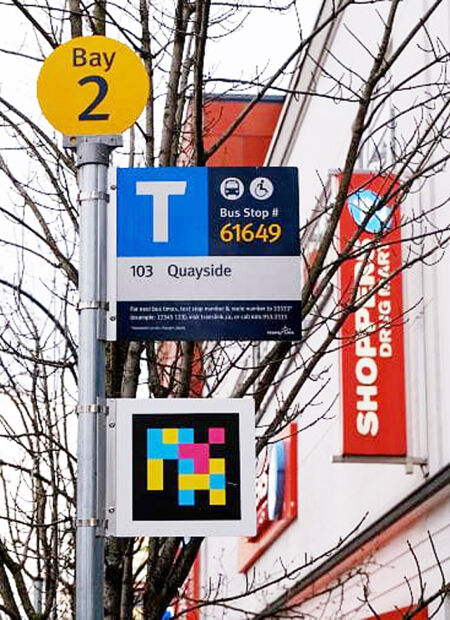TransLink tests tool to help passengers with sight loss
- January 18, 2023
- Steve Rogerson

Canadian transportation authority TransLink is to test an accessibility tool that can help passengers with sight loss navigate its transit system independently.
Starting in late February, customers will be able to download the NaviLens app through the Apple Store or Google Play to scan specialised coded decals, resembling QR codes, at three transit locations. Once the decals are scanned, the app provides audio instructions that guide customers to bus stops and exact points of pick-up. The app can also identify nearby amenities, such as elevators, and provide real-time information alerts.
The audio wayfinding tool allows passengers with sight loss to obtain information easily from the code. Codes can be scanned from up to 14m away and no focus is required to scan them. They can also be scanned in all light conditions and the app can be used while the passenger is moving.
“By bringing this advanced wayfinding technology to Canada for the first time, we’re aiming to create a more inclusive experience and empower our riders to navigate the transit system with ease and safety,” says TransLink CEO Kevin Quinn. “These types of innovative projects demonstrate our commitment to improving accessibility for all customers throughout the region.”
The NaviLens system is in use around the world in cities such as New York, Liverpool and Madrid to help people with sight loss find their way in public spaces, including transit systems, rail stations and shopping centres.
Sixteen NaviLens codes have been installed at three TransLink locations: ten bus bays at New Westminster SkyTrain station; four bus stops near the CNIB office in New Westminster; and two bus stops near the VCC campus on East Broadway in Vancouver.
“Implementing this test technology shows TransLink is working to ensure its customers with sight loss can travel independently and confidently,” said Access for Sight-Impaired Consumers president Rob Sleath. “This project aims to enhance the abilities of those with sight loss by helping them travel throughout the TransLink system.”
Last year, TransLink began installing braille signage at every bus stop – roughly 8400 – throughout Metro Vancouver. In addition, tactile walking surface indicators are being installed at every bus stop on TransLink-owned and leased property.
The Accessible Navigation Project will run for six months and be evaluated for future expansion throughout the region.




